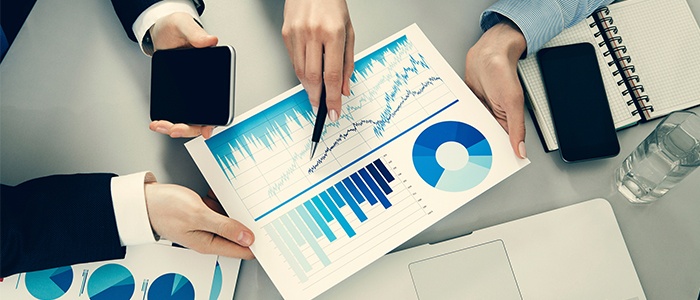Hello!
 Cybersecurity has become a major concern in all walks of life. When the hack of SolarWinds occurred in 2019, businesses and political entities were on alert. In recent years, individuals have also been affected by countless data breaches.
Cybersecurity has become a major concern in all walks of life. When the hack of SolarWinds occurred in 2019, businesses and political entities were on alert. In recent years, individuals have also been affected by countless data breaches.
Many scams have been created by the rise in cryptocurrency, including the Squid Game currency dump and pump from 2021. The world is feeling more unstable and threatening than ever thanks to identity theft and fraudulent UI benefits claims.
There are many ways people can defend themselves against the increasing threat of digital theft, especially when it comes down to their finances. These are the top ways to protect your financial investments against theft.
1. Do your Homework with Providers
These recommendations are mainly about cleaning up financial investments. It’s important to remember that choosing the right provider is the first step to protecting your finances.
This is an intricate activity that cannot be simplified. Businesses are required to adapt and change their business processes to stay safe from thieves who constantly modify their methods. It is important to look for companies that take proactive steps in order to protect their clients when making financial investments.
 This is evident in the example of Nasdaq’s investing leaders. Although the financial company has a lot of experience in security management, they were faced with a very complex identity management system.
This is evident in the example of Nasdaq’s investing leaders. Although the financial company has a lot of experience in security management, they were faced with a very complex identity management system.
It was difficult to make sure that everyone could log in safely and access the correct areas of the internal software systems.
Instead of ignoring the problem, Okta was trusted by the company to streamline the company’s traditional system. To restore safety and ease to the company’s systems, the IdP (identity provider), used tools such as its Single Sign-On (SSO), and Adaptive Multi-Factor Authentication(MFA).
Always check for these types of activities before you open a financial investment account. What steps is the provider taking to protect its system? To protect your financial investments, you should always choose safe systems.
2. Identify your Risks
Before you make any changes to your accounts, it is important to understand your risks. This is a valid question. The number of fraud threats that exist and are becoming more prevalent is endless.
It’s worthwhile to take the time to assess your financial accounts for any potential risks.
 Kiplinger identifies six main risks currently, which are:
Kiplinger identifies six main risks currently, which are:
- Data breaches
- Takeovers of accounts
- Card-not-present fraud
- Theft of synthetic identity
- Peer-to-peer payments
- Scams and government benefits
- Each of these issues threatens different areas within the financial industry. To identify which risks you should be concerned about, it is a good idea to organize your financial accounts.
 Begin by understanding what you have. Next, make sure you know the location of each account. Next, follow the remaining steps to make sure that every account is secure and safe.
Begin by understanding what you have. Next, make sure you know the location of each account. Next, follow the remaining steps to make sure that every account is secure and safe.
3. Protect Your Identity from Theft
Your primary gateway to financial investment is your identity account can be seized by a criminal in many different ways. They can also disguise themselves to allow you to enter multiple locations.
Protecting your identity is one way to protect your indirect investments. Consumer Affairs reports that there was a 31% increase in identity theft victims between 2019 and 2020. What caused this sudden rise in identity theft victims’? The pandemic.
 According to the site, many people are now unable to work from home and remain safe in corporate networks. Many people are exposed to cybersecurity risks, including identity theft.
According to the site, many people are now unable to work from home and remain safe in corporate networks. Many people are exposed to cybersecurity risks, including identity theft.
As a way to protect one’s identity from being stolen, many financial experts recommend that you sign up for identity theft prevention. It is usually free, and while it does require some effort, it is worth it as an additional layer of protection for your finances as well.
Also read: How to choose The Perfect Domain Name
4. Cover the Basics
We’ve covered high-level protection of financial investments so far. You will need to do the dirty work at times.
 These are the most basic, yet crucial security measures. They can be as simple but not as complex as the internet. Finra begins protecting financial information with the triple recommendation of passwords, usernames, and pins.
These are the most basic, yet crucial security measures. They can be as simple but not as complex as the internet. Finra begins protecting financial information with the triple recommendation of passwords, usernames, and pins.
You can do this in many ways. Strong PINs usually contain at least eight numbers and sometimes symbols. Strong passwords must also be long and strong.
There are many ways to keep your passwords and pins fresh, in addition to creating them correctly at first. It is a good idea to change passwords frequently. Multi-factor authentication is also a good idea. You shouldn’t use the same password for multiple accounts. Experts recommend using a password manager to keep your accounts safe and orderly.
5. Protect Your Network and Devices
You should also protect your physical hardware, in addition to your digital passwords. Your network (i.e. This includes your network (i.e., router) as well as the devices you use to access the internet via that network.
 There are many options to protect your local network. For instance, you can:
There are many options to protect your local network. For instance, you can:
- To protect yourself and your network from malicious viruses and other cyber threats, set up firewalls.
- To hide your activities and make it more difficult for criminals to track you, use a VPN.
- To provide the best cybersecurity protection, install robust security software.
- To keep your software protected and up-to-date, enable automatic updates.
Your financial protection plan can be compromised by your personal network and devices. You should make sure they are not a backdoor to your financial security.
6. Avoid Direct Bank Connections and Public Networks
 Criminals love to exploit public connections to attack innocent victims. The U.S. Securities and Exchange Commission strongly recommends that no public computers be used to access financial accounts.
Criminals love to exploit public connections to attack innocent victims. The U.S. Securities and Exchange Commission strongly recommends that no public computers be used to access financial accounts.
The department suggests a few steps to ensure you are safe when using a public computer network. They recommend that you never give out personal information to gain access to public computers. They recommend that you never leave a computer while logged in, log out after you are done, and disable password-saving features.
In addition to the SEC recommendations for public computers, it is wise to not connect your bank account with anything that you do not need to. Instead of using a debit or credit card, use it whenever possible.
Check websites to make sure they are safe. You should look for “HTTPS” in the URL, not just the “HTTP” at its beginning. The extra “s”, which stands for “secure,” is also important.
7. Keep Your Financial Activity in Check and be Smart
Finally, ensure that you are implementing smart cybersecurity best practices in every aspect of your life.
 These are just a few of the obvious ones:
These are just a few of the obvious ones:
- Don’t respond to any request from anyone you don’t know.
- To protect your finances during times of concern, you can use credit freezes.
- You should check your credit reports frequently. Every year, download your free report from each credit bureau.
- To ensure you are alerted of a suspicious activity or any other financial-related site or apps, turn notifications on.
- These are only a few suggestions. It is important that you are aware of your financial investments.
 Our list is complete with the second recommendation. Start by reviewing your financial institutions and assessing the risks. After that, you can take the steps recommended above to protect your investments.
Our list is complete with the second recommendation. Start by reviewing your financial institutions and assessing the risks. After that, you can take the steps recommended above to protect your investments.
Don’t be too confident about your security, even after that’s been done. New threats and cybersecurity trends are constantly emerging in the world of cybersecurity. As you work to protect your financial investments against theft, it is important to maintain a sense of awareness.
Once this is done, you can rest assured that your financial future will be secure.
Thank you!
Subscribe to our newsletter! Join us on social networks!
See you!






